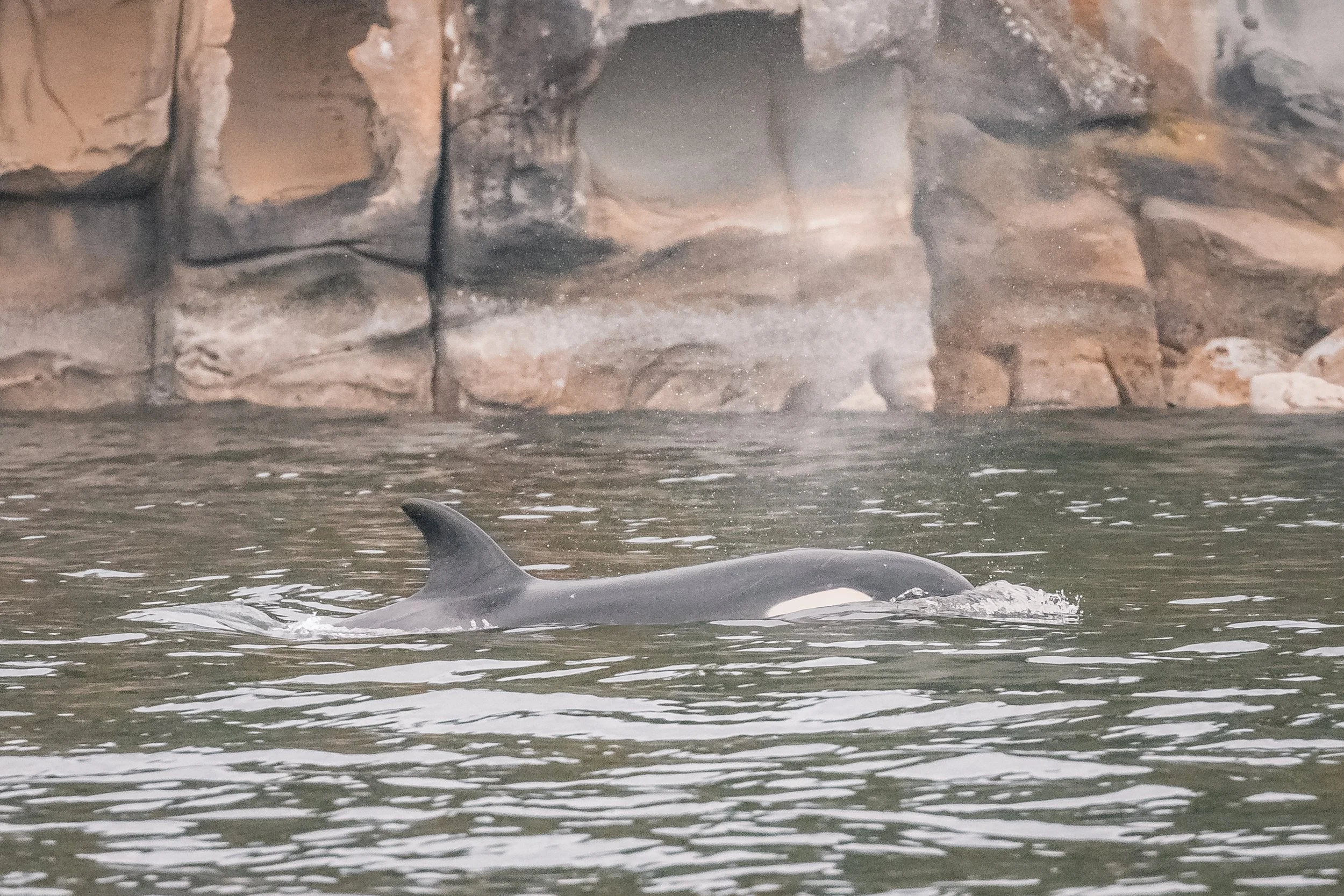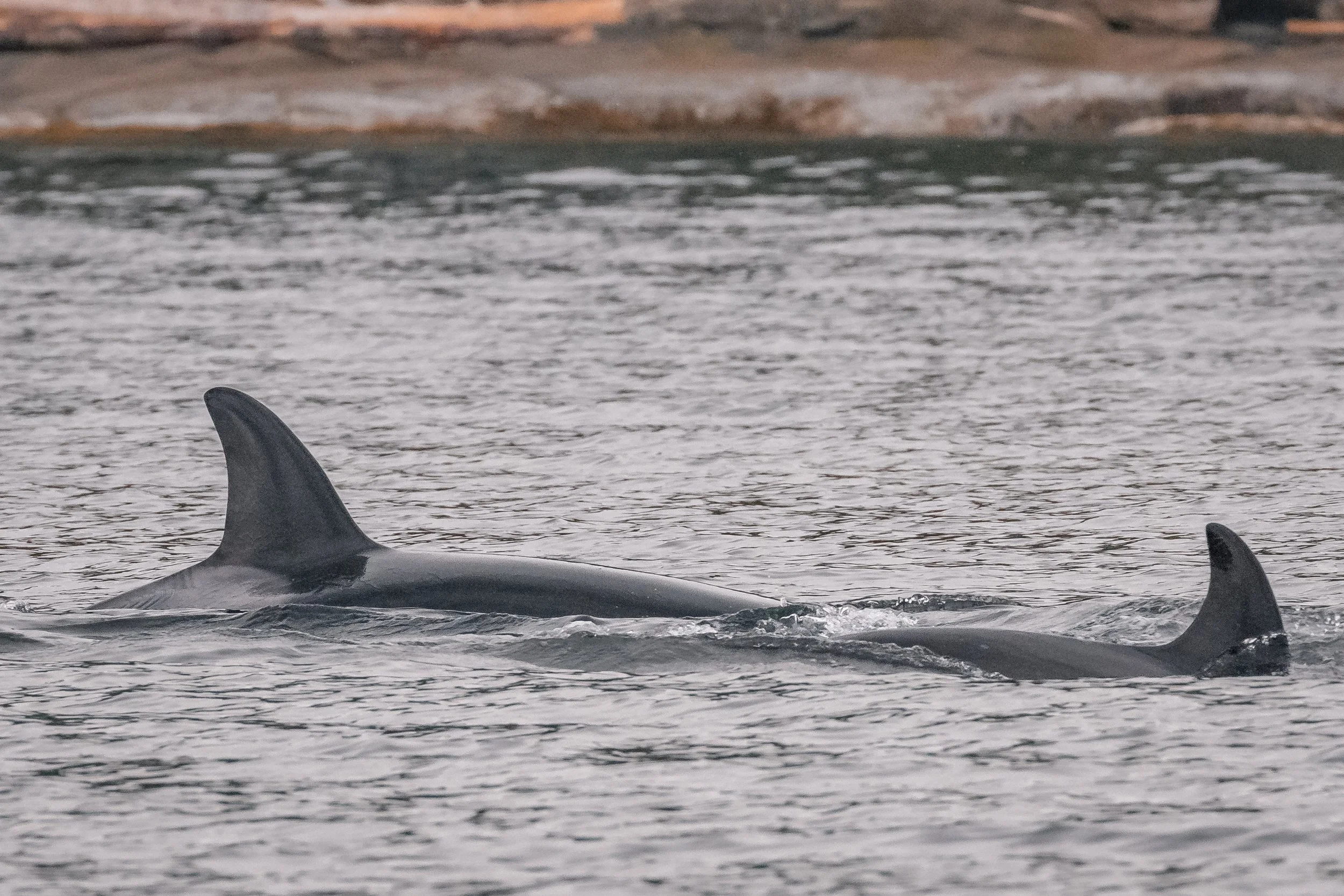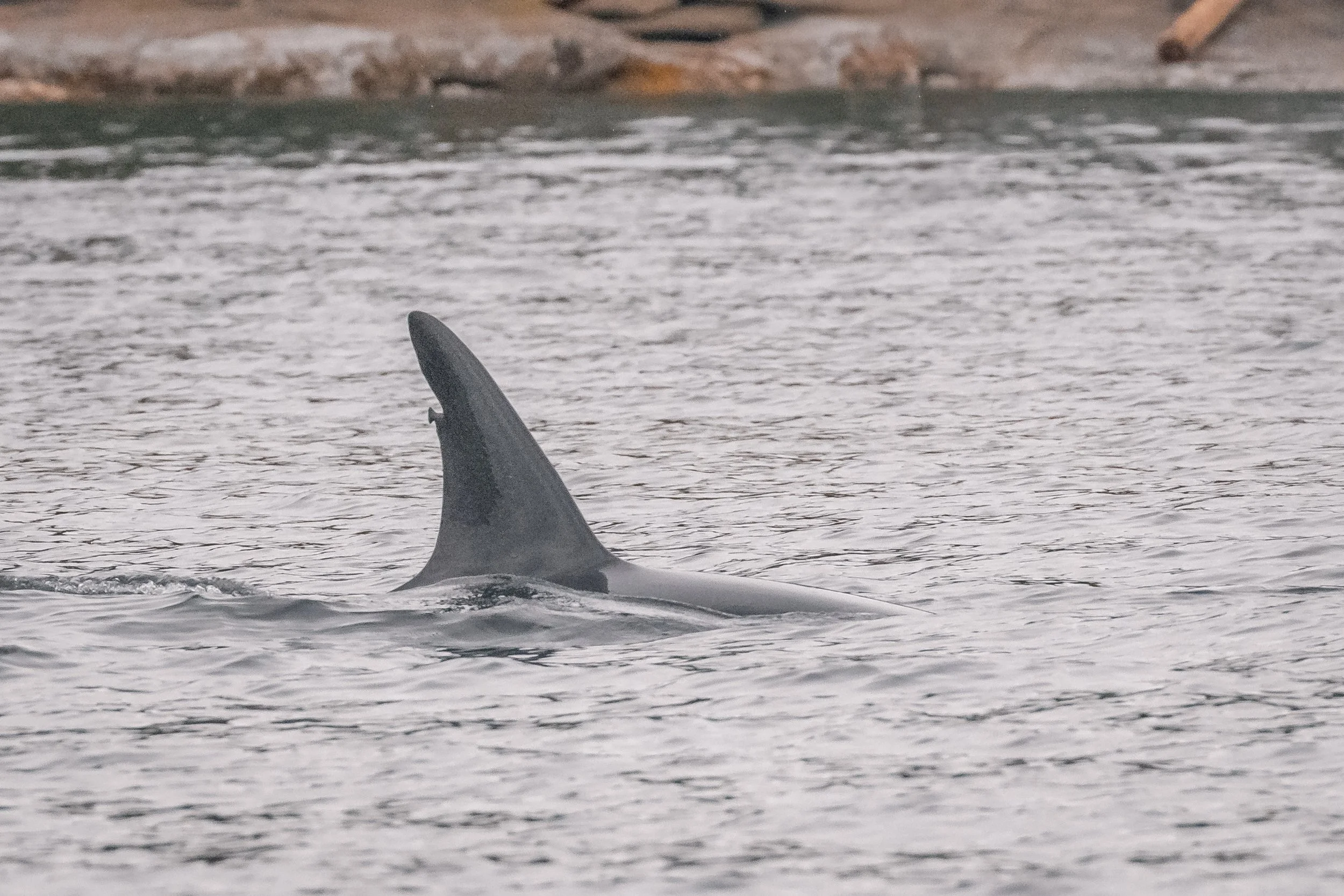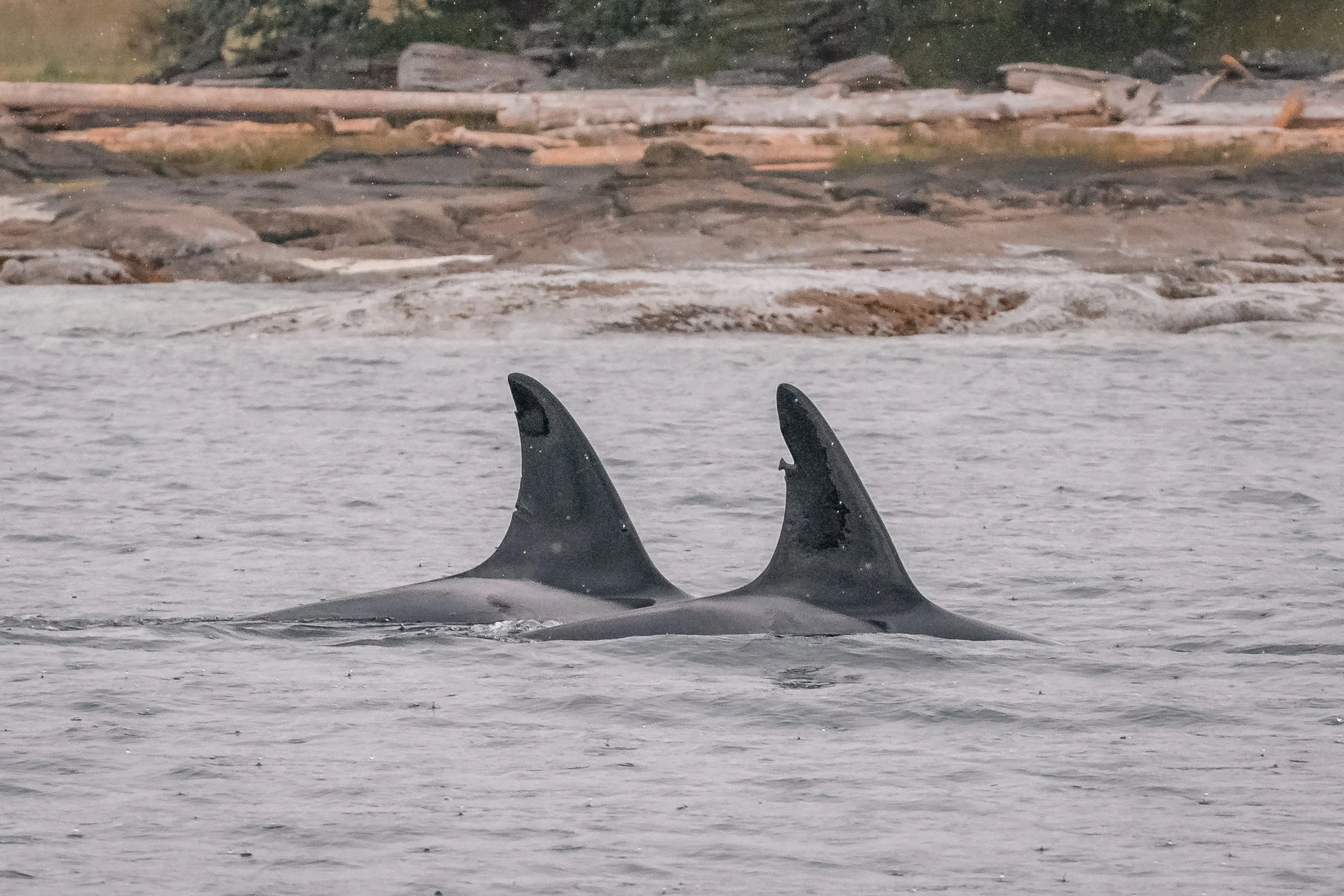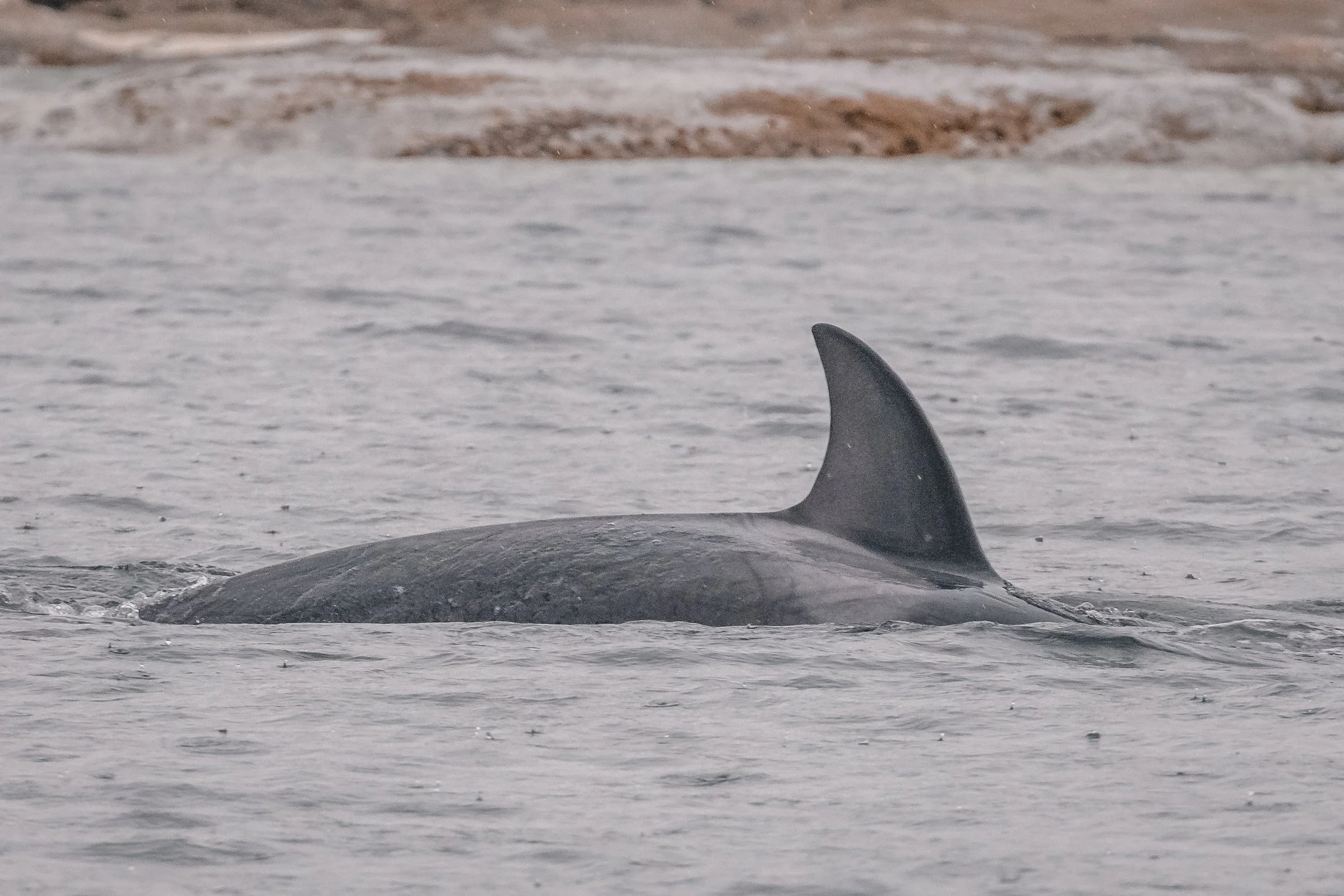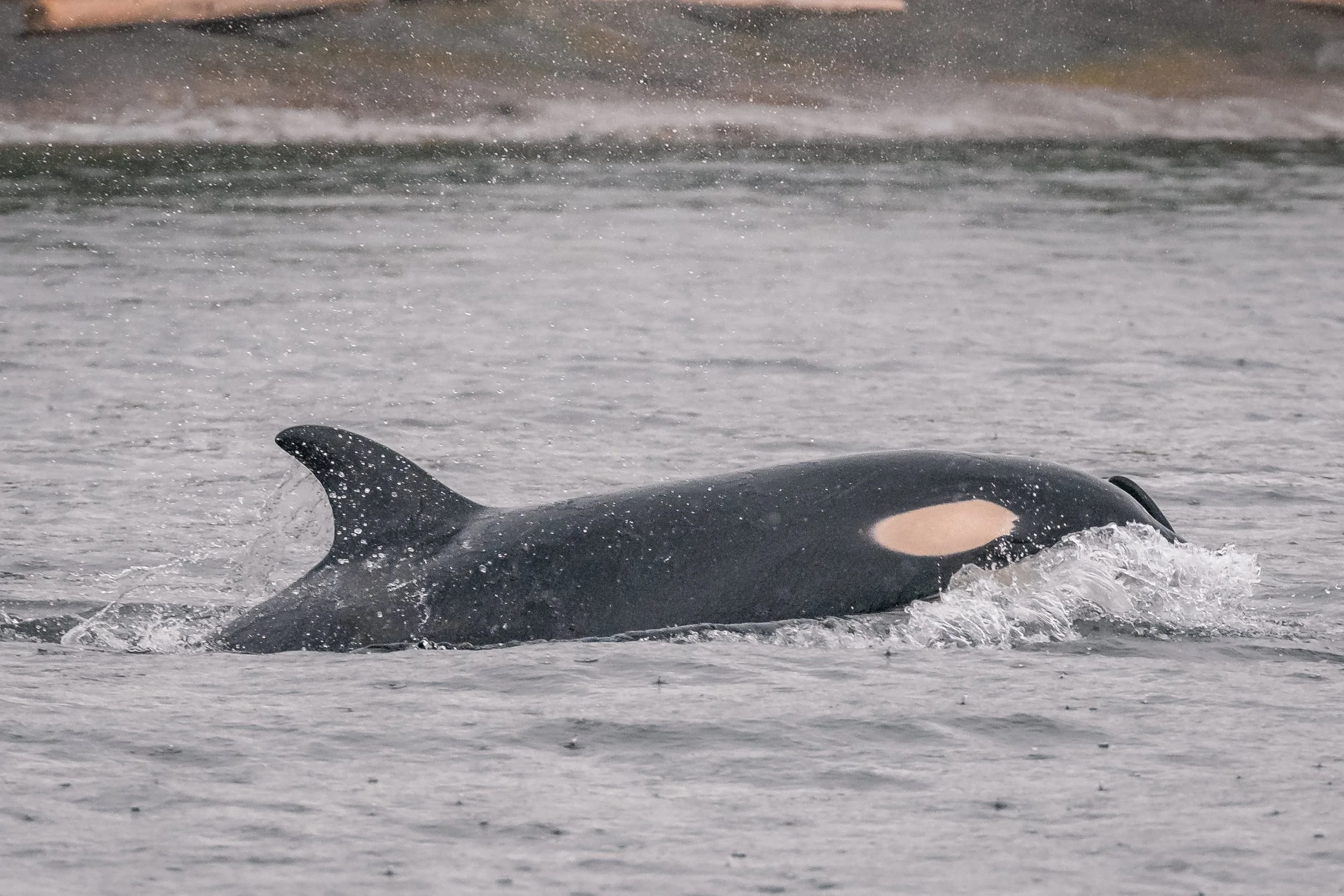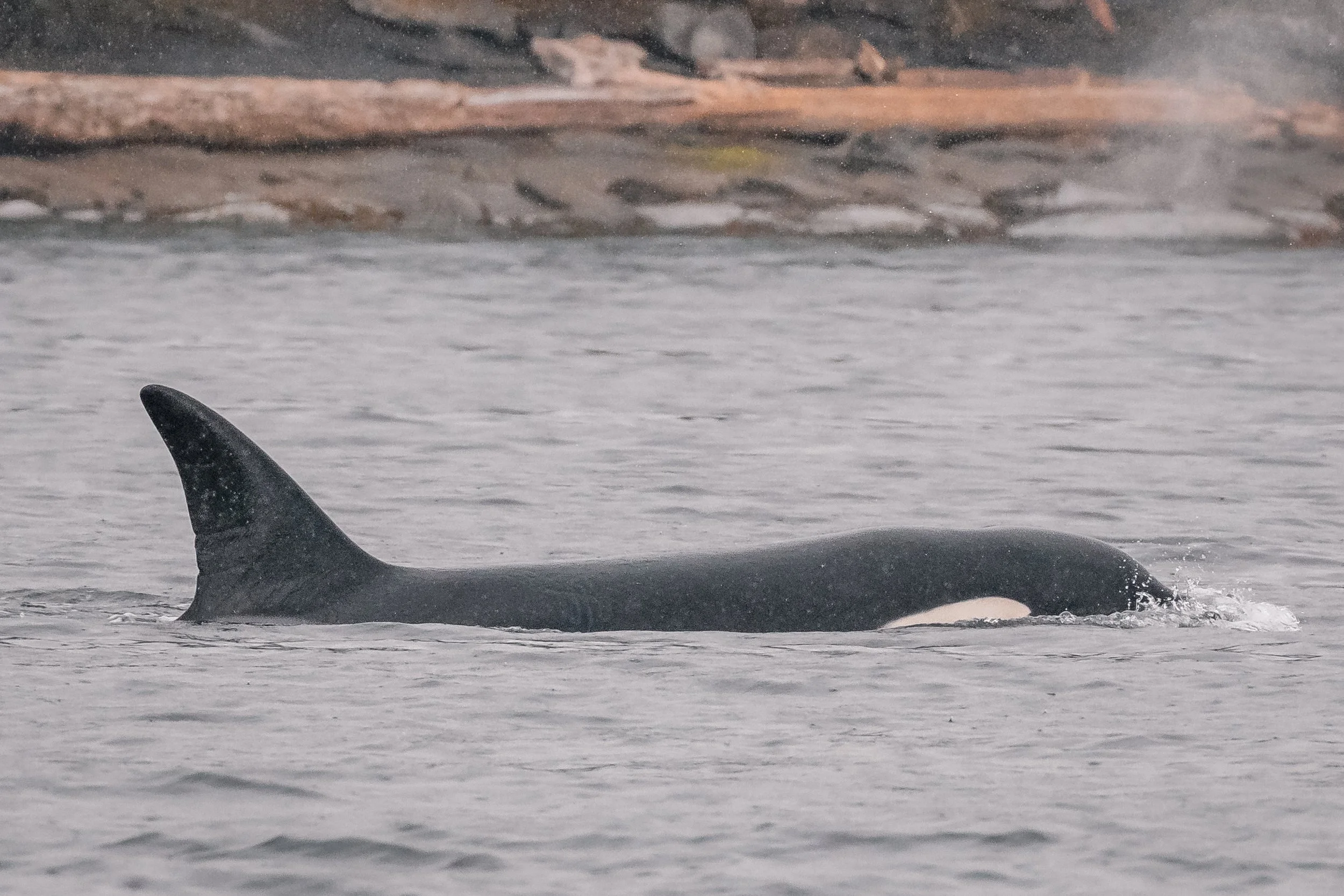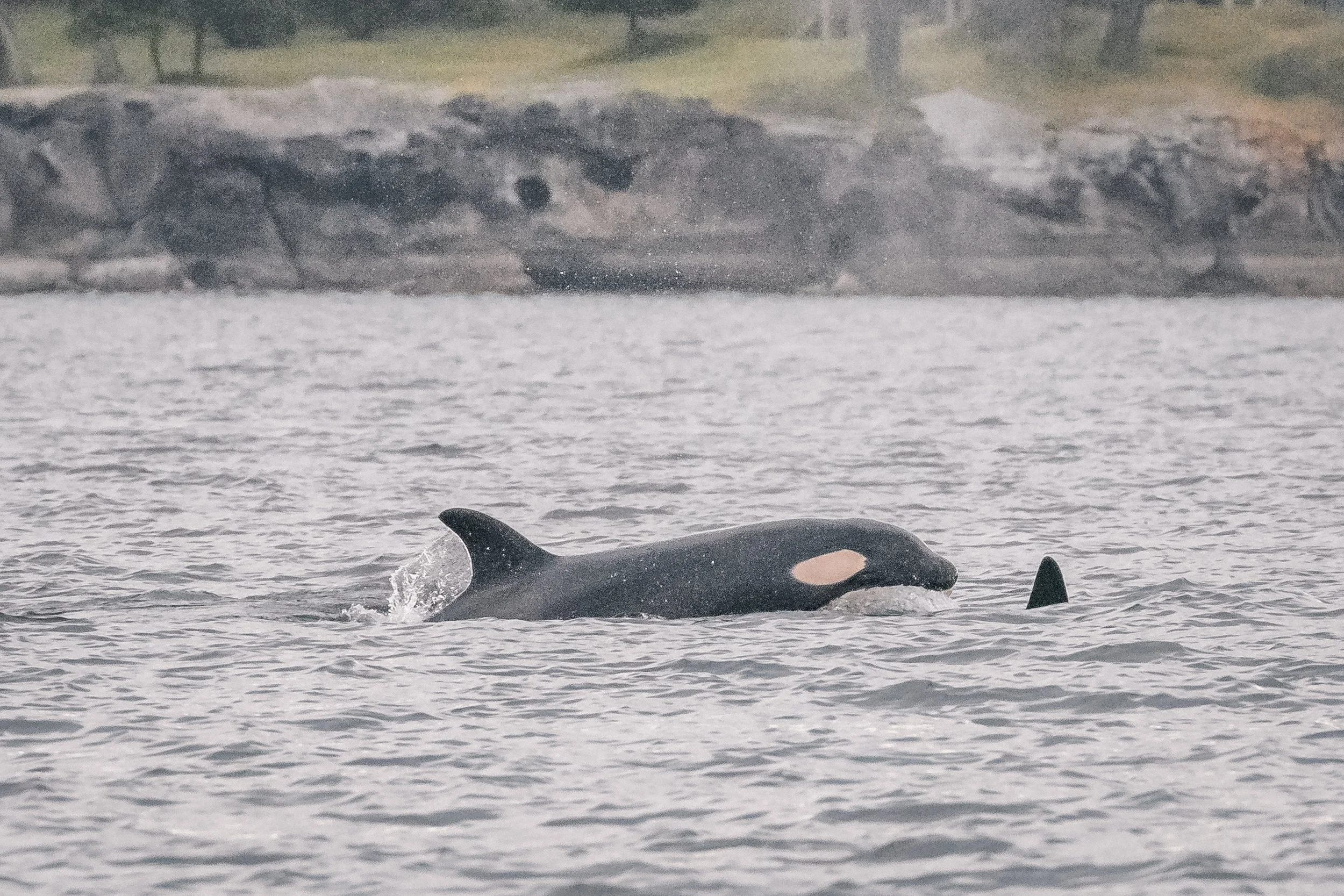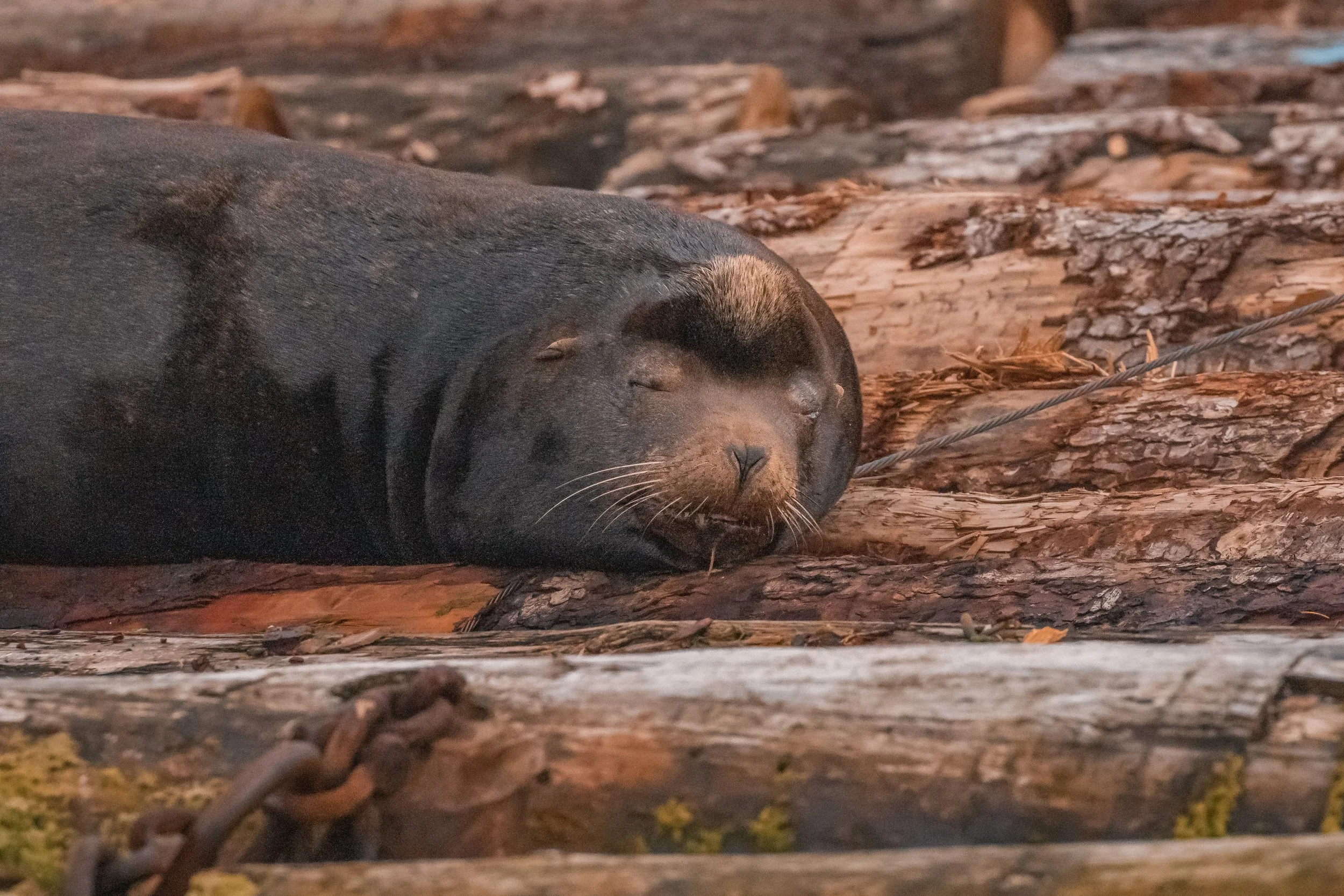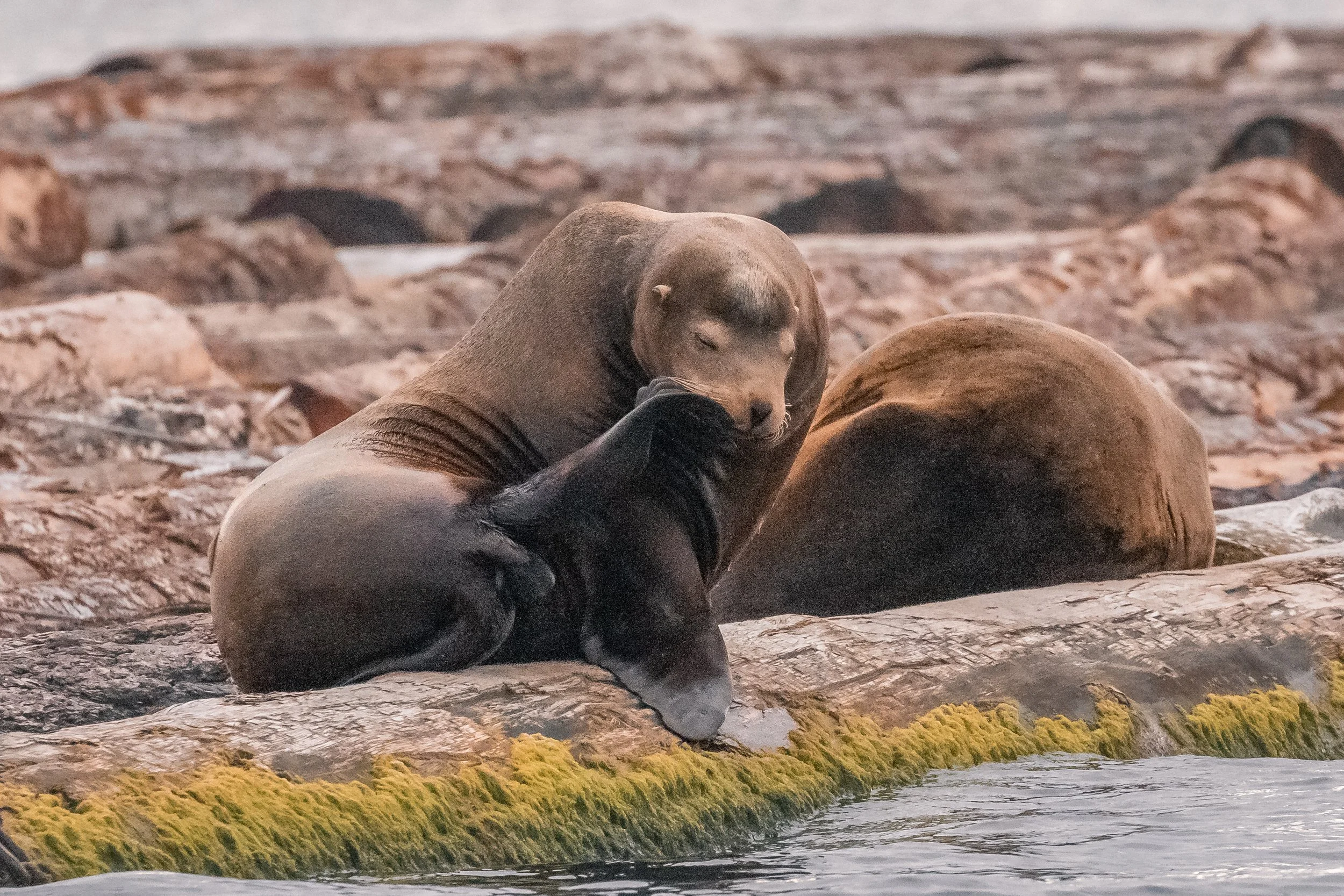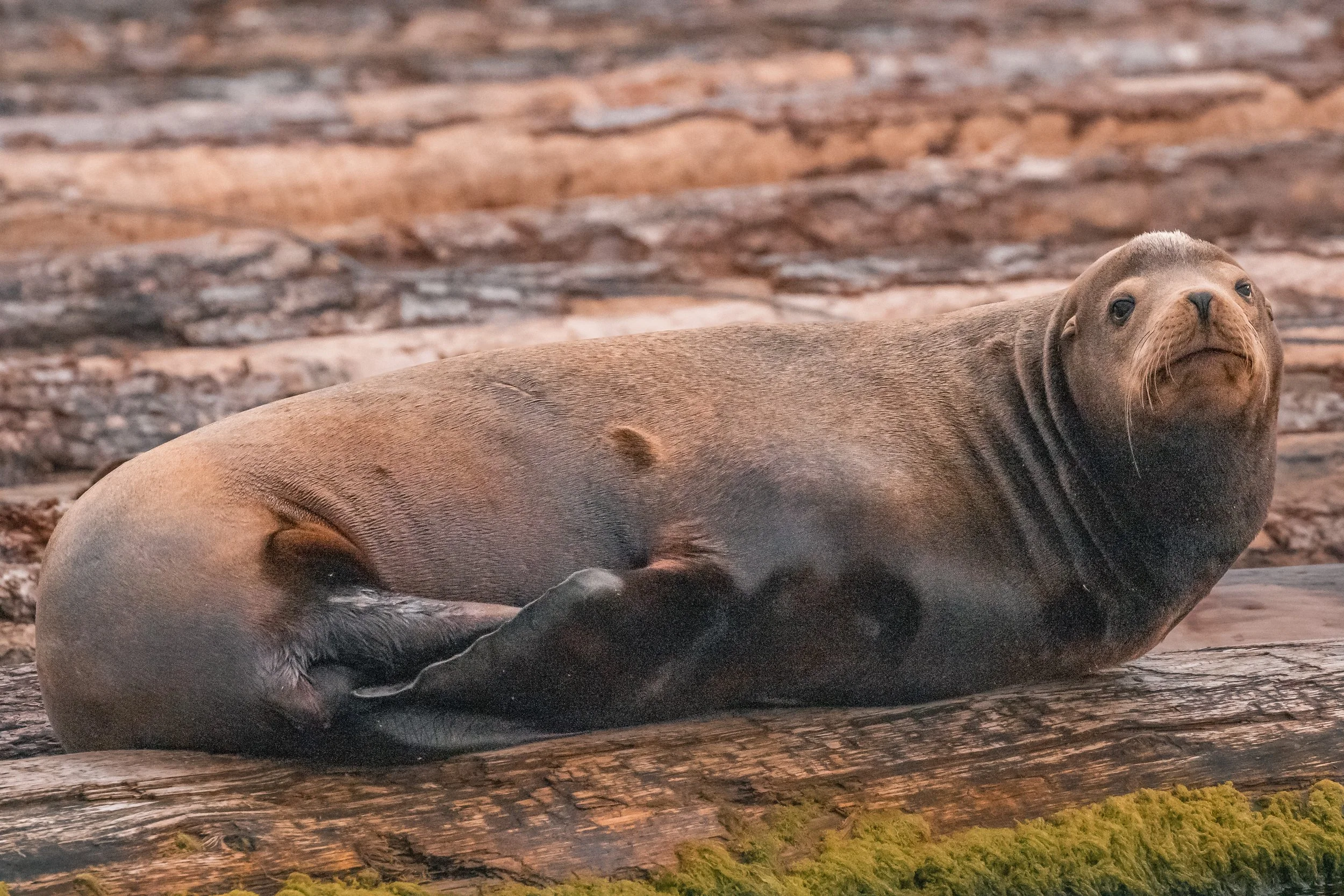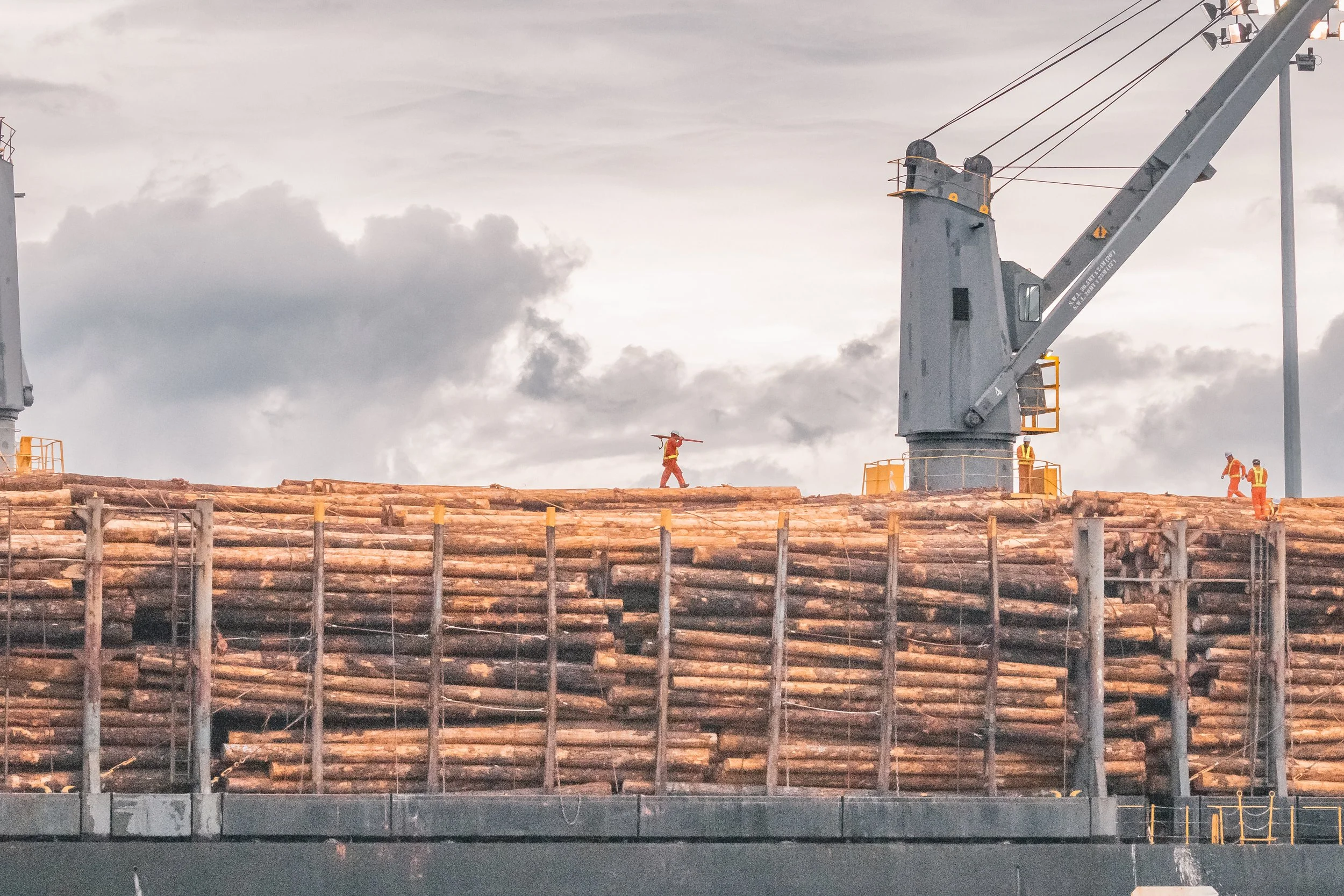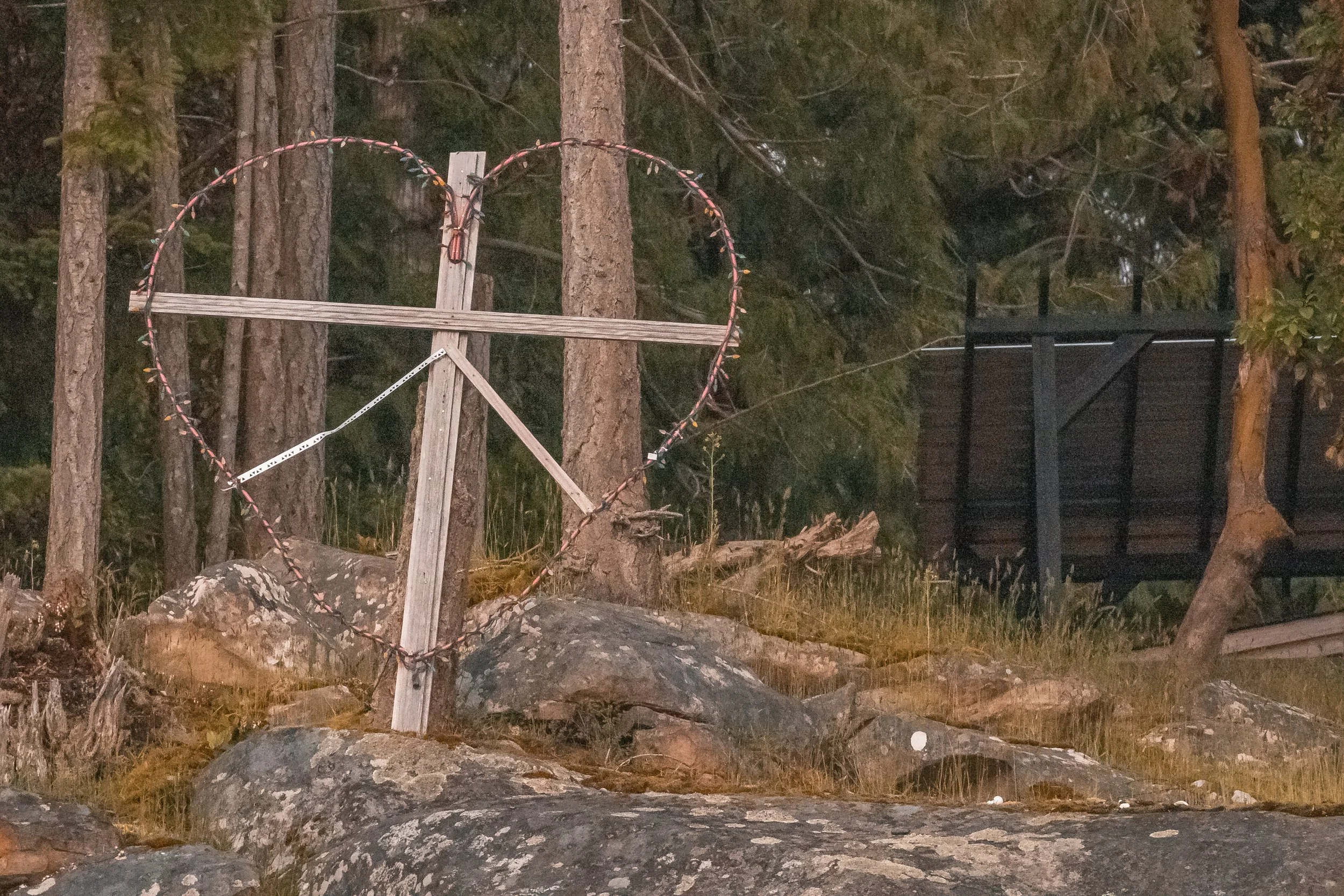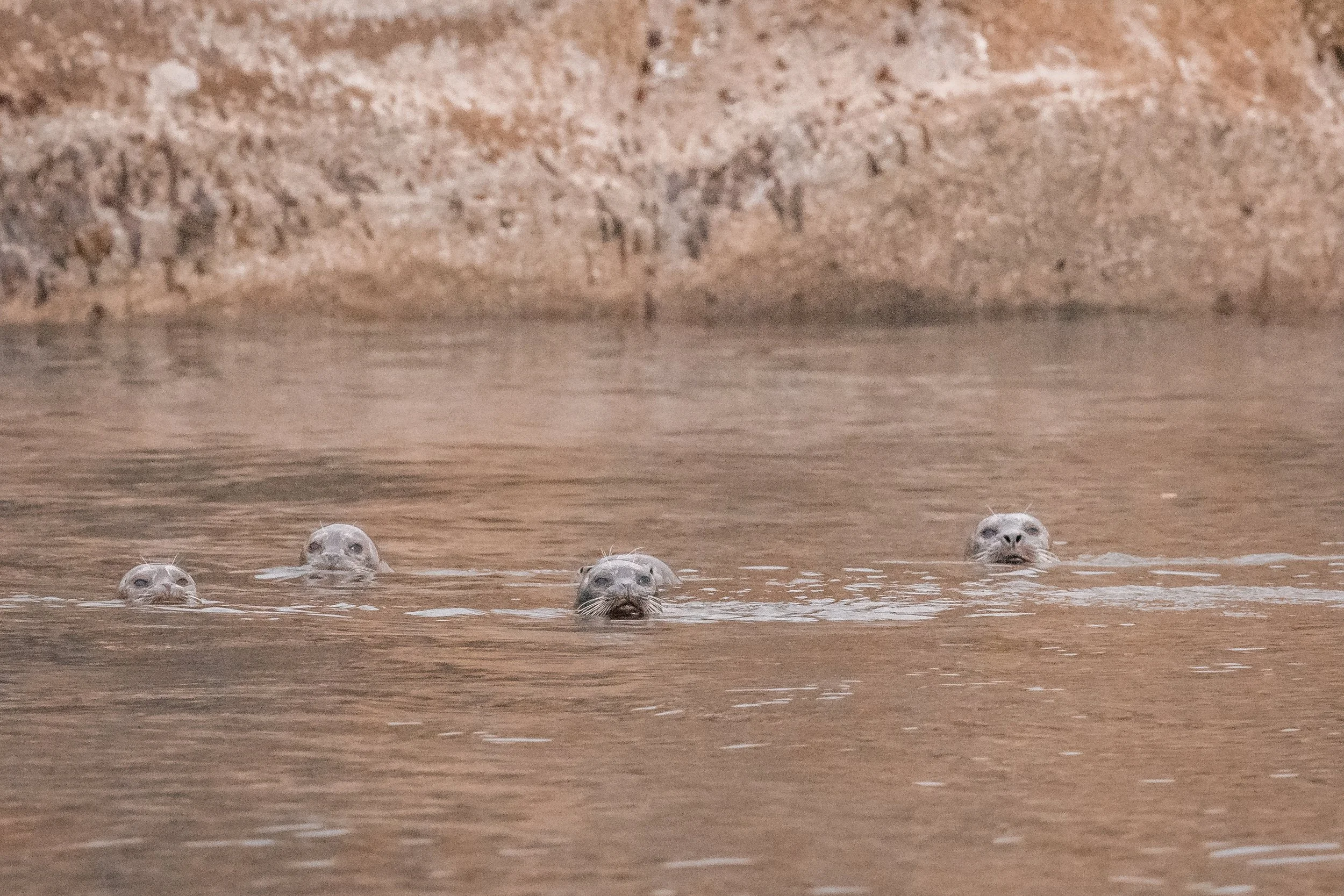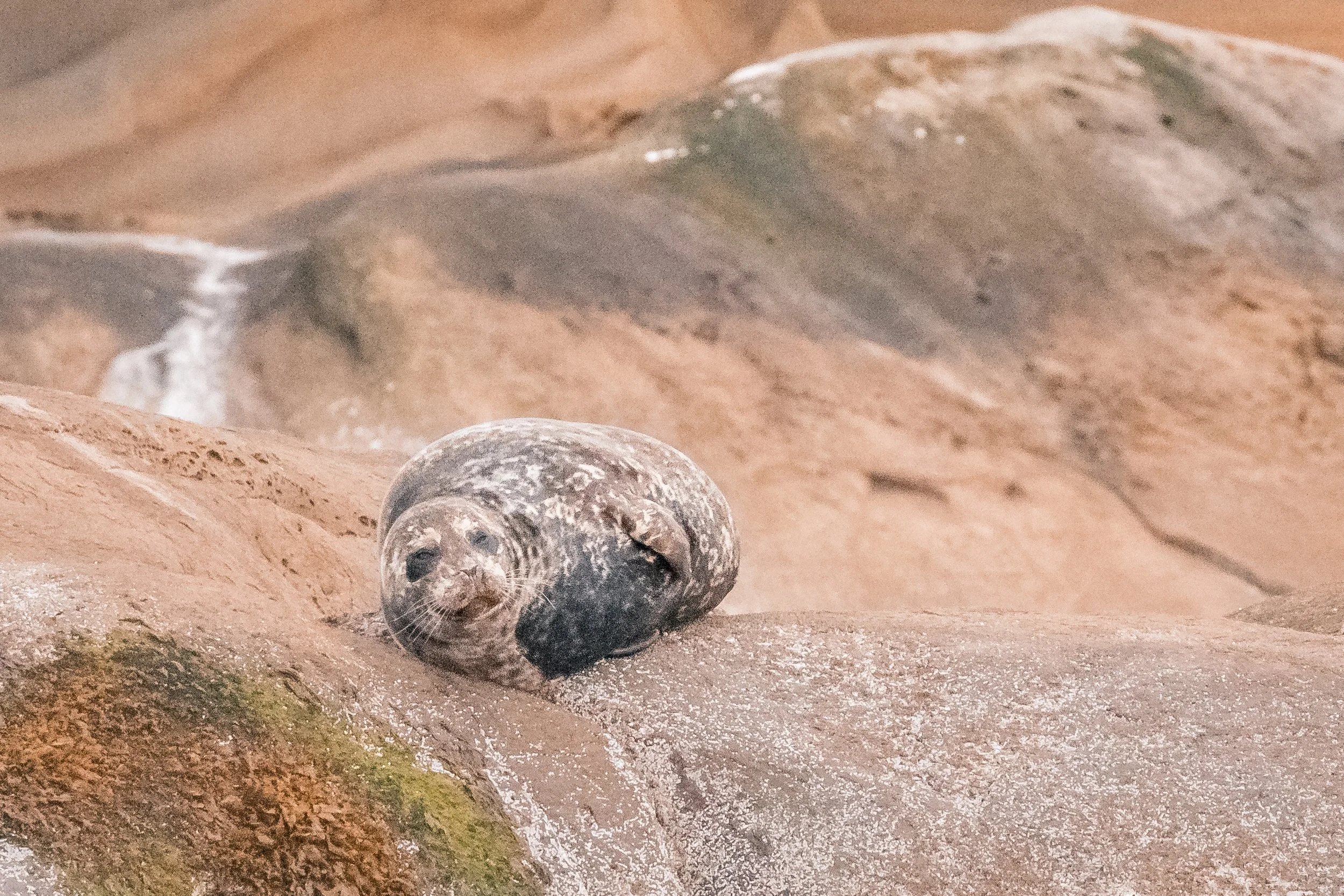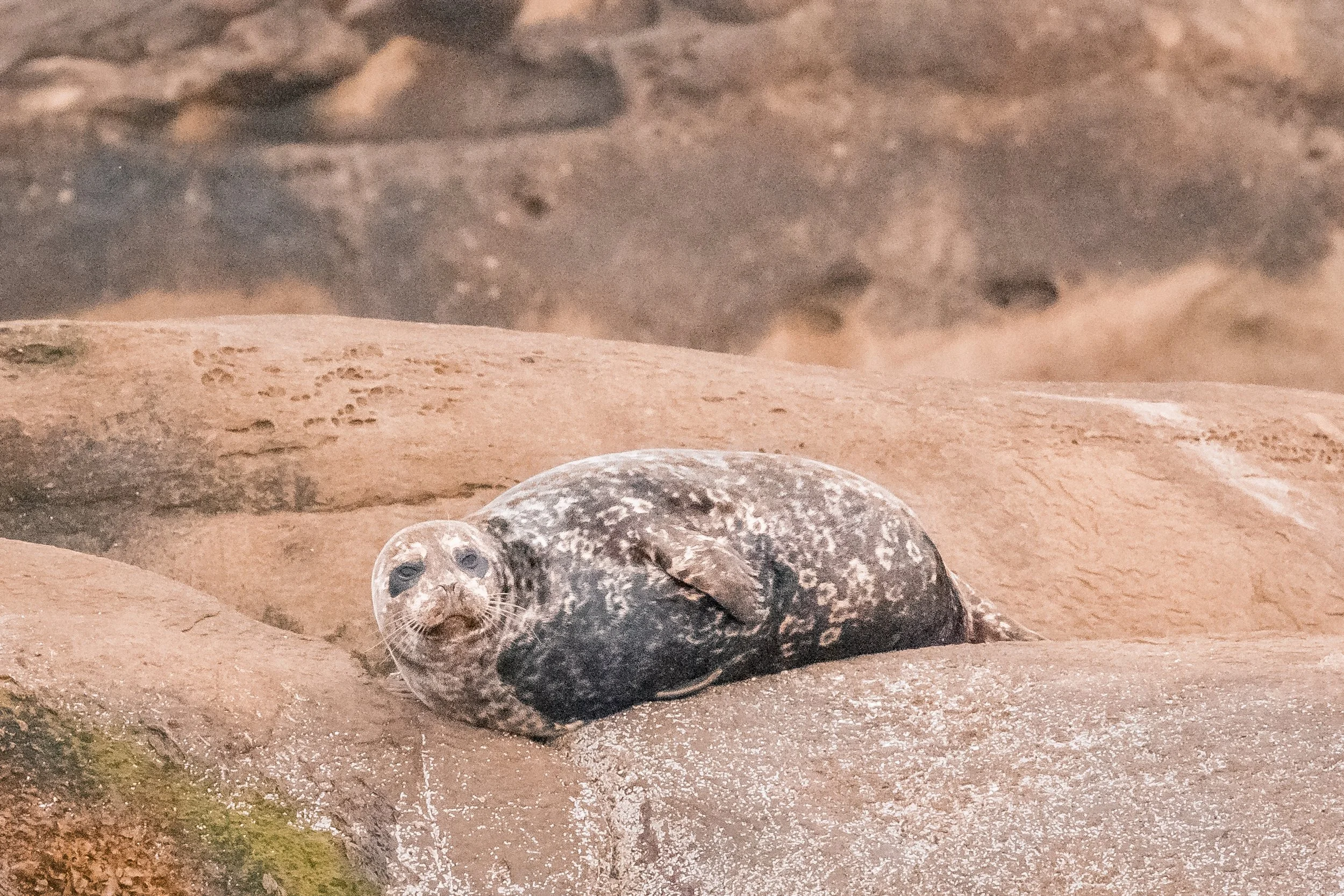June 10, 2022, 3:30 PM - Double Species day, close to home!
For the afternoon tour, we headed back out to Dodd narrows where we had seen two humpbacks making their way through the currents earlier in the day. After travelling with no sight of blows we continued our search south. We got word of a sighting near Coffin Point (Yellow Point) and found them right away! When we first found them there was a mix of fast and slow swimming and sporadic movement, indicative of hunting. They may have ended up circling and catching a meal, because by the end of our hour with them they appeared to fall into sync, with shallow rhythmic dives, as if they were sleeping.
After spending our time with the orca we boated north to Snake Island to check out the wildlife. We watched the adorable harbour seals which were lounging on the rocks, drinking in the last of the day’s sunshine.
The harbour seals are one of the most abundant marine mammals that we find in the Salish sea, with an estimated population of 50,00 in the area. This population has reached its carrying capacity and is now oscillating around this number. The carrying capacity of a species is the number of animals that the ecosystem can successfully maintain. It’s a constant dance between predator and prey populations as hunting drives down the prey population and then as their food becomes more scarce the predator population will decrease, allowing the prey population to increase which…well, you get the point. This is how the ecosystem naturally maintains all the different species at a healthy level when humans aren’t interfering.
Not long after we left the harbour seals at Snake Island, our passengers spotted the two elusive humpbacks we set out to see in the first place! We saw them breathe at the surface a few times before a deep dive. We watched for about 20 minutes, and then we headed back to the dock.
It was a wonderful day spent with our two species of whales and other wildlife throughout the trip. Our marine naturalist Rebecca Stirling captured some amazing photos which you can view below.
T086A Eider travelling close to shore with T086A4 Akia.
Baby face! It’s T124A4 Sabio with likely her calf from 2021! So cute!
T124A4 Sabio surfacing.
One of the calves coming to the surface for a breath.
Here is a T086As family photo! You can see Eiders dorsal in the front, Tyndalls in the back, and another member, likely Akia, surfacing in the foreground.
Calf is leading the charge!
Look at the eye! Although it’s closed you can see this calves eye just in front of and down from the eye patch.
T086A3 Tyndall.
T086A Eider.
T086A Eider (left) and her third born daughter T086A3 Tyndall (right)
You can see all the scars left from tussles with prey and interspecies interactions along this Orcas back.
T124A4 Sabio.
T124A4 Sabio.
T124A4 Sabio and her calf showing off.
T086A Eider in front of Tyndall.
T086A4 Tyndall (left) and T086A Eider (right).
T124A4 Sabio.
T086A Eider.
California Sea Lion enjoying the log booms off Harmac Pulp Mill.
Longshoremen hard at work!
Dry those wings out!
Harbour seals watching from the water at snake island.




